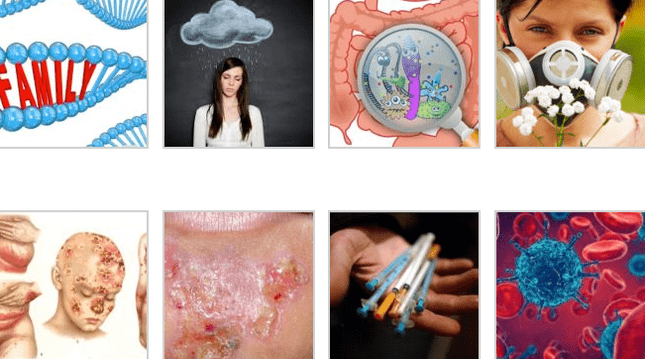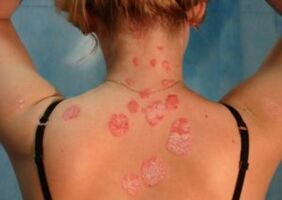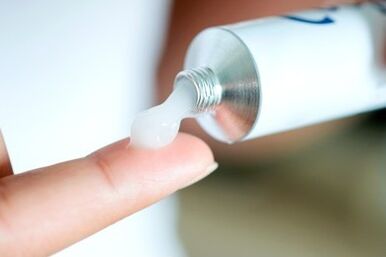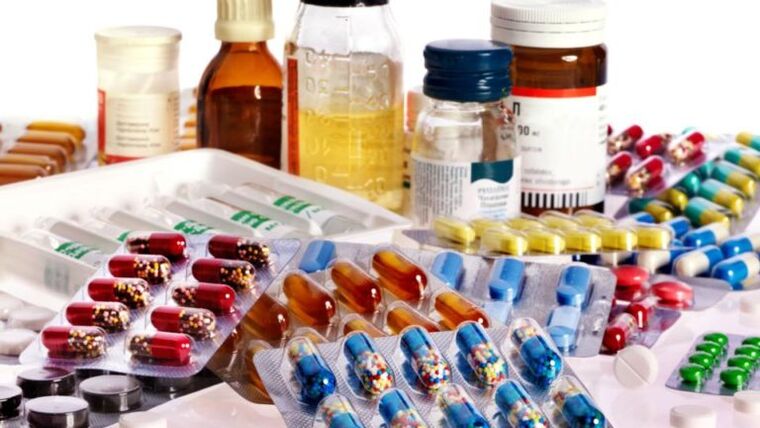Psoriasis is presented as a non-infectious skin disease of a chronic nature. Statistics say that 3. 7% of the inhabitants of the world are susceptible to this disease, which is called scaly lichen. Gender is not important in this case, psoriasis is not contagious, while the representative risk group is people aged 14-27 years. The skin appears red, flaky, with white scales.
Localization can occur on any part of the body, but the most common sites are the scalp, lower back, knees, and elbows. Since the disease in question is chronic, it is manifested by periods of remission and exacerbations. How does the disease affect the patient's life, and how to get rid of psoriasis permanently?
The reason for appearing

To understand the causes of psoriasis, it is necessary to realize that the pathological process is systemic, both the skin and the whole human body are involved in it. The causes are not entirely clear, they can be viral, infectious, genetic, neurological, or a mixture. Cellular and humoral immunity is activated, contributing to the initiation of autoimmune processes that cause damage to cells, mainly epidermal cells.
Metabolism is also disturbed, and genetic burden also aggravates skin psoriasis. As a result, the process of cell regeneration is accelerated by 3-5 times, leading to the formation of psoriatic plaques. So why does psoriasis occur, how does quality of life depend 80% on proper treatment and timely detection of the disease:
- Bad genetics;
- Depression, constant stress;
- Dysbacteriosis;
- Problems with hormones;
- Allergic diseases;
- Candida and streptococcal dermatitis;
- Viral diseases;
- Addiction;
- Infection of a parasitic nature;
- Problems with metabolism.

Symptom
The number of rashes at the initial stage of the pathology can be considered insignificant. Studying the symptoms will allow you to know what psoriasis looks like on the body and how to recognize the disease. Psoriasis plaques act as a primary symptom. This is scaly hypertrophic skin. Against the background of healthy skin, it looks remarkable and amazing. The presence of the following signs is a reason to urgently consult a dermatologist:
- Mild scaly skin nodules;
- Itching in problem areas;
- Excessive dryness and flaking of the skin;
- Burning pain, cracking, blisters in the palms and feet;
- The nail plates are deformed and scaly.
Types of Psoriasis
The classification of psoriasis involves dividing the disease into different types and forms. The following types of psoriasis should be considered, taking into account the localization of the pathology and the nature of the rash:

- Plaque psoriasis on the body is often referred to as vulgar, common, or simple disease. This is the most common variant, diagnosed in 85% of all patients. Inflamed areas of the skin are typical of the disease in question - they are prone to peeling, reddening, and accompanied by fever. The red area under the scab is easily injured and may bleed. Over time, the plates merge into so-called paraffin lakes.
- Inverse psoriasis affects the flexor muscle surfaces. The inflamed areas of skin do not peel and barely protrude above the healthy skin. Localization is represented by skin folds, namely the folds under the breast, if psoriasis in women, armpits, the area of the external genitalia, the inner surface of the thighs and skin folds ininguinal. When sweat is released, the skin is injured or there is friction, the condition of the inflamed areas of the skin becomes worse. Diabetics and children are the most frequent patients.
- Pustular psoriasis of the skin is characterized by the most complex symptoms. Non-infectious, clear, inflammatory vesicles that appear on areas of healthy skin. Around the pustules thickened, inflamed, red skin accompanied by fever.
- Human rupioid psoriasis is characterized not only by a patchy rash but also by acute inflammation of the epidermis. The surface of the skin under the rough patches is bright pink and watery.
- Intestinal psoriasis in adults is characterized by an abundant number of small purple or red blisters. The shape of the bubble can be round, teardrop, dot or drop. The affected area is usually quite large, it can be psoriasis on the head, neck, shoulders, back, legs or thighs. Angina or streptococcal pharyngitis are often provoking factors for the development of the pathology in question.
Types of psoriasis
As for the forms of psoriasis, it can be erythrodermic psoriasis, joint psoriasis, or psoriatic dystrophy:
- Psoriatic nail dystrophy, which affects the nails, leads to deformity of the nail plate on the fingers of the lower or upper extremities. It is possible to change the color of the nail itself or the nail bed. This type of psoriasis also leads to thickening, horizontal lines, spots, and dots, as well as increased fragility and separation. It is even possible to completely lose the nail.
- Skin psoriasis in men and women develops gradually and leads to complications. This is a consequence of neglected plaque psoriasis, when the epidermis becomes very red and swollen, which is characterized by a pronounced acute inflammatory process. The flaking and inflammation are widespread, accompanied by pain, itching, and swelling of the subcutaneous tissue. With this form of disease, the fatal outcome is higher than with other diseases, because the body loses the ability to regulate body temperature due to extensive inflammation, peeling and peeling.
- Psoriatic arthritis, in addition to the main symptoms, is complemented by an inflammatory process in the joints and connective tissues. This form of the disease can affect any joint, but is usually the small joints of the upper and lower extremities. If the disease spreads to the knee and hip joints, it is likely that the patient will lose mobility. The form of the disease is considered to be the disease that accounts for 10-15% of all cases when skin psoriasis is diagnosed.

Stages of development
How psoriasis develops is characterized by three consecutive stages. Every patient with the disease in question experiences them all, but with proper treatment, the duration of the second stage can be significantly reduced:
- The advanced stage is characterized by an increase in the first signs and a general deterioration of health;
- In the sedentary stage, there is a peak in the development of pathology;
- The regression phase is represented by a gradual decrease in symptoms and a significant improvement in overall well-being.
Diagnose
A dermatologist is involved in the diagnosis and further treatment of psoriasis. There is usually no difficulty in identifying the disease, since skin lesions are of a special nature. Rarely, additional laboratory tests in the form of rheumatoid factor determination and complete blood count are required. The involvement of a rheumatologist becomes appropriate if psoriatic arthritis is diagnosed. In such situations, it is necessary to make an X-ray of the joint. The effectiveness of skin biopsies is observed in extreme cases, when it is difficult to make a differential diagnosis.

Life quality
The presence of psoriasis leads to a significant decrease in quality of life. Difficulties can arise in the process of adjusting to society and in the work area due to physical and emotional discomfort. Severe itching and pain can complicate basic life processes: sleeping, taking care of your body, walking, playing sports, performing professional errands, taking care of the house, pets.
On the part of patients, they often show excessive concern about their appearance, they are afraid of negative reactions from others and have low self-esteem. Pain along with itching and discomfort often leads to social isolation, anxiety disorders, social phobias, and depressive states.
Treatment
Getting rid of psoriasis involves an integrated approach using the following drugs and medications.
Creams and ointments
Ointments and creams allow you to fight psoriasis quite effectively with minimal side effects. These funds are usually applied directly to the inflamed areas:

- Hormonal ointments are one of the most effective drugs, they eliminate the main symptoms and stop the proliferation of keratinocytes. The strongest means of this kind can irritate the skin, causing dryness and thinning of the epidermis.
- Salicylic acid helps get rid of psoriasis by clearing the skin. The dosage when using this remedy is extremely important, as using too much will lead to hair loss and skin irritation.
- Retinoids are the active form of vitamin A, they are almost as effective as hormonal ointments, but the clinical effect is achieved longer. Ultraviolet hypersensitivity is the most common adverse syndrome.
- Tar ointment reduces the severity of negative symptoms and stops the growth of skin cells. Side effects include hair loss, acne, or folliculitis.
- Ointment or gel form of vitamin D. Use in combination with hormonal agents for maximum effect.
- Moisturizers help eliminate negative symptoms in the form of dryness and itching, but they are not accepted as the mainstay of treatment.
- Anthralin contained in the composition of the ointment helps to remove scales, prevents the proliferation of keratinocytes. After applying to the inflamed skin, the product must be washed off after a while.
Tablets for psoriasis

Since it is not always possible to defeat psoriasis through local therapy, the addition of a pill treatment strategy becomes necessary. Side effects can add up significantly, so it's important to constantly monitor your overall health through testing and seeing your doctor:
- Systemic glucocorticosteroids reduce inflammation, swelling and itching, and suppress the proliferation of skin cells. The side effects are many, so the tablets of the Anna group are rarely prescribed.
- Systemic psoriasis can be treated with Methotrexate, which shows effective cytostatic and anti-inflammatory effects. The body responds quite positively to low doses. Rare side effects include increased fatigue, decreased appetite, and digestive problems.
- Retinoids are effective in cases of psoriasis that cannot be treated with other methods. Among the side effects are hair loss and inflammation of the lip area. After using tablets of this group, you cannot have children for 3 years, because retinoids cause birth defects.
- Cyclosporine has much in common with methotrexate and belongs to the class of immunosuppressants. High blood pressure and kidney disease were the most common side effects.
- If the listed drugs cannot be used due to the characteristics of the patient's organism, then the prescription of hydroxyurea is required.
injections
Medicines that help get rid of psoriasis can be presented in the form of injections with the following components:
- Antihistamines stop acute itching immediately;
- Glucocorticosteroid in injection form is used if tablets and ointments with this ingredient are not effective;
- Probiotics are the result of human and animal protein synthesis. They have the effect of improving the body's immune system, but the cost is too high for many patients.
Shampoo application
It is also worth considering special therapeutic shampoos, since only they can get rid of psoriasis on the head:
- Antifungal shampoos are effective if the causative agent of the pathological inflammation is a fungal infection;
- Shampoos containing corticosteroids;
- Tar shampoo or soap is used to get rid of psoriasis, as well as relieve itching and burning. It is also acceptable to add birch resin directly to the shampoo that the patient normally uses.

Medicine
If the occurrence of psoriasis is diagnosed in time, many drugs can provide appropriate results, the specialist will recommend the most suitable one.

Bioactive substances
Since it is rarely possible to get rid of psoriasis quickly, dietary supplements as an additional maintenance therapy:
- Vitamin D is very useful, since calcium is one of the most important minerals in the fight against the skin disease in question, and vitamin D is necessary for its absorption. phase is the most effective.
- Silicon in the composition of the vitamin-mineral complex acts as an absorbent that attracts antigens, and at the same time helps to improve the condition of the skin.
- Lecithin can rapidly restore epithelial cells that die in this pathology. The integrity of the skin is restored much faster, and the inflammatory process becomes less pronounced.
- Omega-3 acids and fish oil also contribute to the elimination of the inflammatory process.
Folk methods for treatment
To increase the effectiveness of the drug, complex therapy can be supplemented with alternative treatments, but keep in mind that psoriasis on the back and other areas can be sensitive to allergens, so you should first consult a doctor:

- Chinese green tea helps relieve discomfort caused by itchy skin, glowing patches of skin. Can be applied internally as a drink or externally as a mask on the affected areas.
- Sunbathing can reduce the manifestations of psoriasis, especially in combination with seawater. Should not be exposed to direct ultraviolet rays, should sunbathe in the shade. If you ignore this recommendation, the manifestations of psoriasis are eliminated only for a while, but soon the disease returns with more pronounced negative symptoms.
- Ointments from birch sap, salicylic alcohol and sea buckthorn oil should be applied directly to the affected areas for 2 hours. If the psoriasis on the abdomen or back is wide enough, you should put gauze on top of the ointment. After rinsing off the ointment, it is necessary to apply celandine tincture in the form of an oil.
- The infusion of flaxseed allows you to eliminate the clinical symptoms of the mentioned disease in a week. For a day, soak a spoonful of seeds in a cup of boiling water, then boil, cool and filter the water, drink in the morning before meals, combined with activated charcoal (1 tablet per 10 kg of weight). The course of treatment should be continued for 20 days, even if the manifestations of psoriasis have disappeared. Do not consume products with caffeine in the ingredients.
- Propolis and butter in the form of ointment in a ratio of 1: 20. Mix the ingredients, boil for 15 minutes, strain and apply to the affected areas. The product must be stored in the refrigerator.
- Celery decoction can be taken once a day, and a swab can be applied for 2 hours for 21 days. Three courses with a break of one week will be enough to forget about the disease for several years.
- Cedarwood powder and kerosene in the form of ointment must be used for 3 days, applied to the inflamed skin. After a break of 4 days, the course continues until the external manifestations disappear completely. To prepare the product, all ingredients are mixed in equal proportions.

Prevent
Psoriasis prevention, as well as measures to prevent exacerbations, are as relevant as the treatment itself:
- The cleanliness of the skin must be monitored very carefully, using moisturizers with natural ingredients.
- Monitor your overall health, especially if you have immune problems. Taking a multivitamin complex is a mandatory component of the prevention of psoriasis.
- Regular massage improves lymphatic flow and blood circulation, so that breakdown products are removed faster and the skin is better cleansed.
- All exposure to household chemicals must be minimized. Gloves and household respirators are mandatory protective equipment if household chores cannot be transferred to other family members. When choosing household chemicals, pay attention to the presence of dyes, chemicals, and fragrances. The level of the Christmas tree should be equal to the level of nature. It is also necessary to minimize the use of skin care cosmetics and decorative cosmetics.
- Often the first signs of illness appear after a nervous breakdown, so it's important to master relaxation techniques and self-control. The benefits of healthy sleep should not be overlooked. When stressed on a regular basis, you can drink herbal calming teas and tinctures.
- Smoking is a direct trigger for both the exacerbation and the initial illness itself. We are talking about smokers who use more than 20 cigarettes per day. Under the influence of cigarette smoke, immunity decreases, blood vessels are affected, the body's antioxidant capacity weakens. As for alcohol, it does not affect the onset of this skin disease, but it can aggravate its course.

Psoriasis and pregnancy
Pregnancy aggravates the treatment of psoriasis, since the use to date on all drugs is allowed. It is also important to understand the details of pregnancy planning and other situations related to this stage in a woman's life.
Planned pregnancy
Reproductive function of women and men is not affected by the disease. As for the potential harm to the baby, psoriasis is not transmitted by contact so breastfeeding and communicating with the baby should be no problem. Another thing is that the transmission of the disease is at the genetic level, but the probability is not so great - 8-15% if one of the parents has the disease. The risk increases if both parents are affected - 50-60%.
When planning a pregnancy, you should first undergo another course of treatment to get the disease into remission. We are talking specifically about a woman, since the father's condition does not affect the pregnancy. Stress also needs to be reduced and treated responsibly in this respect.

Pregnancy
As for the pregnancy itself, many people note that the course of the pathology is greatly facilitated, but the symptoms worsen immediately after childbirth. It is because the woman's immune system is weakened, in fact the baby will be exhausted, absorbing nutrients through the umbilical cord. If treatment is required during pregnancy, you should give preference to safer means with less likelihood of side effects. Analyze your condition and you can understand how the disease will progress in future pregnancies. Next, it is necessary to consider which medications can be used and which ones should be avoided.
| Ban | Encourage | |
| Local treatment | Vitamin A-based preparations are clearly contraindicated. | Glucocorticosteroids in the composition of ointments and creams are acceptable in minimal quantities. On the shoulders, abdomen and mammary glands is not recommended because cortisone can cause stretch marks. |
| Vitamin D-based preparations are allowed to be used only in small quantities in some problem areas. | Soothing and moisturizing creams have no contraindications. | |
| Whole body treatment | Methotrexate and acetritin cause miscarriage or birth defects. Treatment with these drugs before childbirth requires 4 months of abstinence. In addition, such drugs negatively affect the condition of the male sperm, so the rule of compliance with this period also applies to the man. | UV-B lamps are not harmful to the fetus nor to the mother. |
| Puva therapy during pregnancy is also not suitable, as it requires pre-administration of photosensitizers. | In severe cases, Cycloporine can be prescribed, this drug does not adversely affect the child's body, but can cause side effects for the mother. |
Part C
The presence of psoriasis is not a reason to perform a cesarean section during childbirth, but it is worth considering the possibility of the Koebner phenomenon. We are talking about the appearance of psoriasis in already damaged areas of the skin. To date, no formal studies have been performed regarding the wound healing rate of these areas and the risk of infection.
Psoriasis after childbirth
After childbirth, in most cases, there is an exacerbation of illness that is caused by stress, fatigue, chronic lack of sleep, irregular and limited nutrition, and hormonal imbalance. Breastfeeding is allowed, because the disease is not transmitted to the baby through milk, however, when using the drug on a large scale, breast-feeding is not recommended because some ingredients can enter the milk.
There is no drug that can guarantee 100% safety for mother and fetus, so it is imperative to consult an obstetrician-gynecologist.
Despite the fact that psoriasis is chronic, with well-planned treatment it is possible to successfully eliminate negative symptoms and avoid a decrease in quality of life due to the many limitations associated with the disease.


























